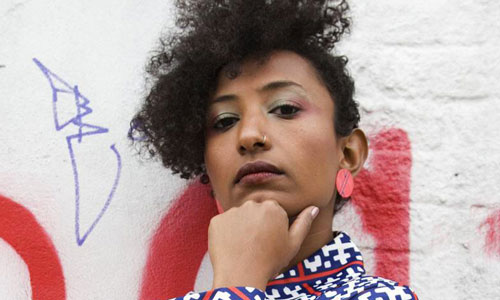Blog April 8, 2014
Khartoum Soundbites: Vintage Sudanese Pop Selected by Alsarah
When we interviewed the Brooklyn-based Sudanese vocalist Alsarah about her latest album with the Nubatones, she mentioned that her Facebook and Twitter accounts were essentially constant streams of Sudanese/Nubian music. Intrigued, we asked her if she would be willing to put a list of her favorites together for us. Here is the result. And stay tuned for that interview, coming soon!
I wanted to share a few of my Sudanese favorites with you guys in case you weren't familiar with them. And if you are familiar, then this is so we can bond over favorites in the comments section. This by no means represents the wide diversity of Sudanese music at all! But it should give you an idea of some of the sounds that I grew up with in Khartoum. Happy listening!
--Alsarah
Khogali Osman (Sudan)
"Ismana Mara"
This era of Sudanese music might be one of my favorites in what I call the "Khartoum pop" sound, distinctly different than the rest of Sudan's traditional sounds. This more-orchestrated sound was a fusion of the many different rhythms and sounds from different regions of the country that all met in the capital city.
Abdel Gadir Salim (Sudan)
"Umri Ma Bansa"
An amazing musician and ethnomusicologist, Abdel Gadir Salim is one of the leading figures in fusing traditional rhythms from western Sudan with the popular sounds of Khartoum.
Ali Hasan Kuban (Nubia/Egypt)
"Sukkar, Sukkar, Sukkar"
I know the title of this list is Khartoum Soundbites, but Nubians have always crossed the borders freely between the two countries since their land extends from Dongula in north Sudan to Aswan in south Egypt. So I am including the grandfather of Nubian pop in this list. This man can not be praised enough. An innovator in Nubian music, he revolutionized the traditional style by bringing in many new instruments such as trumpet and keys, and creating more pop-oriented songs. This gave mass appeal to what was once a niche sound. He also produced many other Nubian acts in Cairo and Sudan and created a wave of Nubian musicians who followed in his footsteps.
Asha Elfelatia (Sudan)
"Simsim Elgadarif"
A true trailblazer for all Sudanese women, Asha Elfelatia became a nationally known name as a singer at a time when there were no other female singers in the Sudanese scene recording albums or appearing on the radio. Female singers were strictly for weddings and other social events that call for folk music or "low-brow art" as it's thought. She dared to make a name for herself in a public sphere allocated exclusively to men, and was a strong force to be reckoned with, making way for many many other female singers and performers after her.
Singer unknown (Ethiopia/Sudan)
"Zanoba"
Ethiopia and Sudan's pentatonic love affair goes way back. So it should be no surprise that there is a slew of videos out there that are Ethiopian covers of Sudanese songs and vice versa. This song is originally a traditional song from western Sudan that praises the beauty of a heartbreaker named Zanoba (sometimes spelled Zainooba), but it is being covered by an Ethiopian singer in this video with heavy synth and a slightly different rhythm than the original. She starts the first half of the song with the original Arabic lyrics and then does a few verses in Amharic. The video itself is part of a whole fad starting a few years ago that seem to be a collage of different dances from other African videos (to entirely different songs, I might add) as well as original choreography made for the song featured in the video. I can't say I actually understand the mysterious logic behind these editing choices, though.
Mohamed Ahmed Awad (Sudan)
"Aboy Ma Tagool Leyhu La"
An iconic practitioner of traditional Sudanese music, this live TV concert has Awad performing a variety of songs from the aghani banat (girls' music) tradition. This song specifically sings of a woman begging her father not to refuse her suitor that she secretly loves. I love this recording for many reasons but besides the amazing music and performance, please note the 2:22 marker when the TV audience storms the stage to cheer the singer. This is a part of live performance etiquette: When audience members like a song they go up to the stage to show their respect to the band by making a motion with their hands called tabsheer.
For your listening/viewing pleasure, here are the above videos in continuous playlist form:









